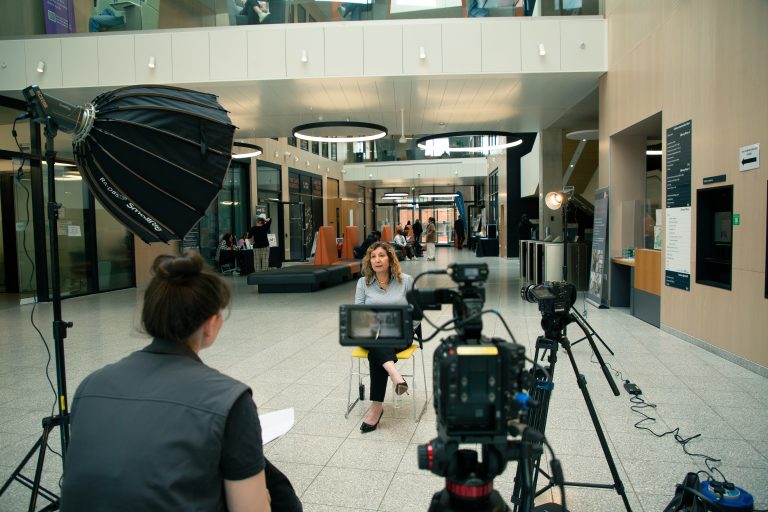We are often contacted by clients looking for professional promotional video production, or animated video production.
Their first question they ask is how much will it cost? and expect us to tell them what we think it looks like during the very first call. Whilst these things are valid – obviously people want to know about indicative budgets and they might also have a firm idea of what their video could look like as an animated video or as a filmed video, the first question we should all be asking is “what is the point of the video and what are the messages your clients need to hear?” Once that has been established we can start to storyboard the production so we know what the final edit will look like.
What is a storyboard?
A storyboard is a visual document which allows the video production company, and you as the client, to flesh out how a promotional video production will be structured and look before engaging in any live filming or animation.
The storyboard is normally produced with visuals in a series of boxes that represent ‘scenes’ of the video production. These visuals are either rough sketches, visual examples pulled from other videos or in some cases, very detailed illustrations.
With animated video, you will find that the visuals tend to be sketches or rough drawings of the scenes and not highly detailed graphics. This is to keep the production costs down as often businesses are working to a budget.
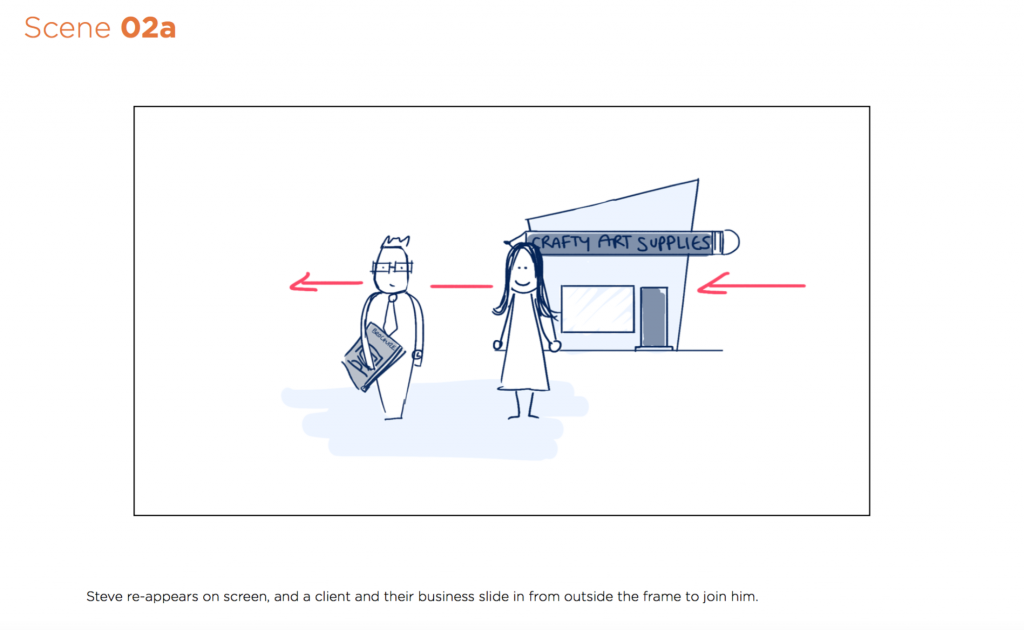
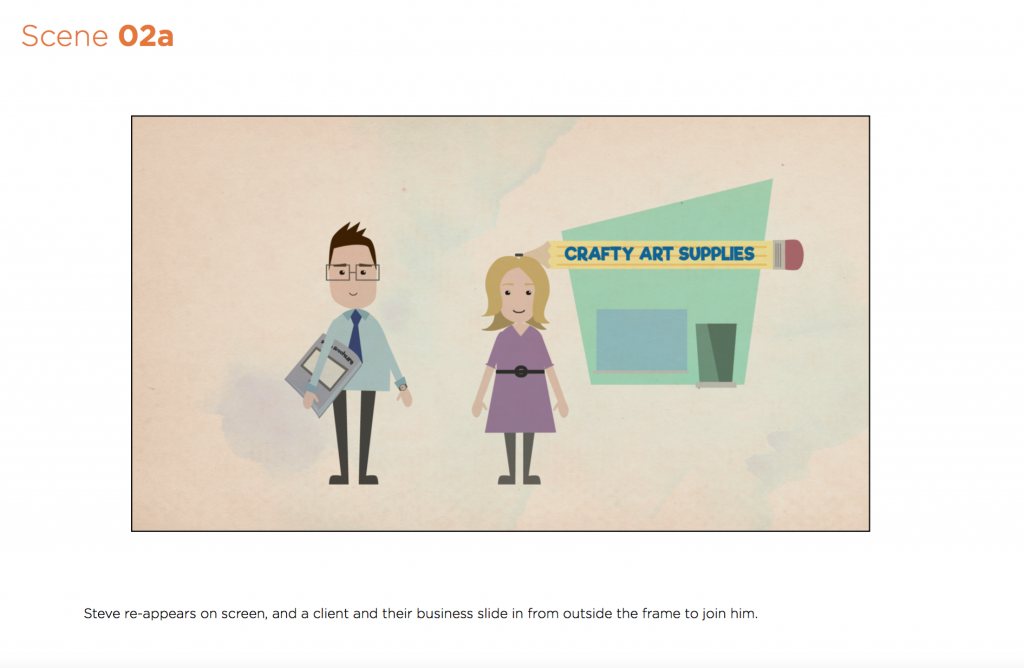
With corporate videos that will be filmed, there are usually a series of images that are assembled to give a feel for the edit, for example using pictures from the location to show the spaces that will be filmed, or screenshots from other videos to show how something could look.
When looked at in conjunction with a script, the storyboard will ensure that everyone understands how the video will visually support the content, and objectives of the project and help to clarify those key messages you want your client base to take away.
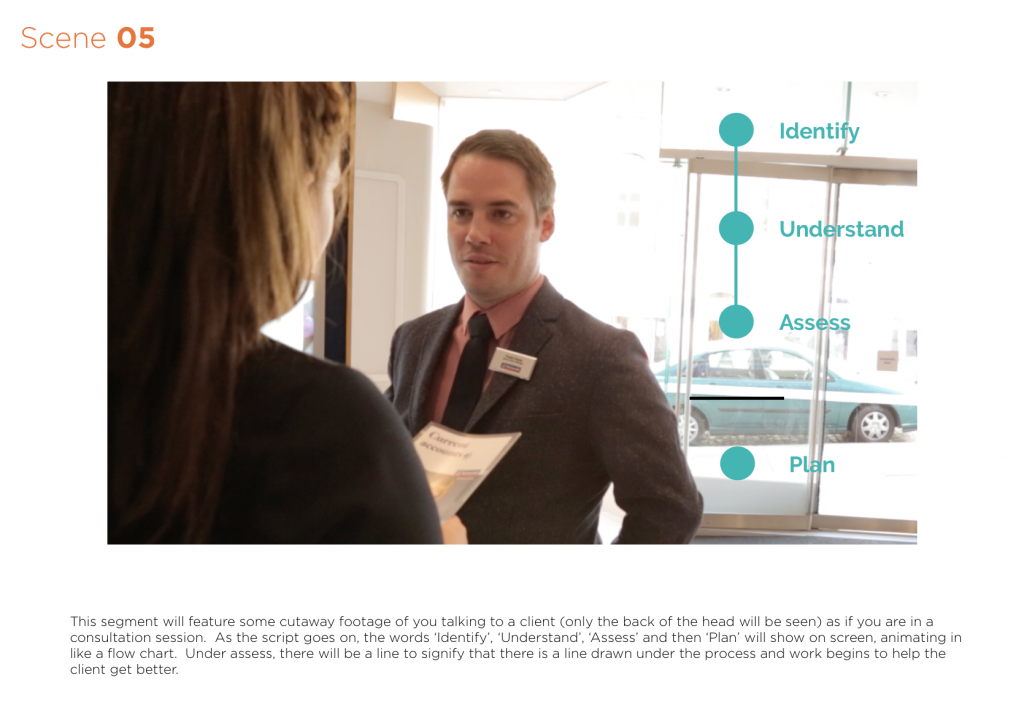
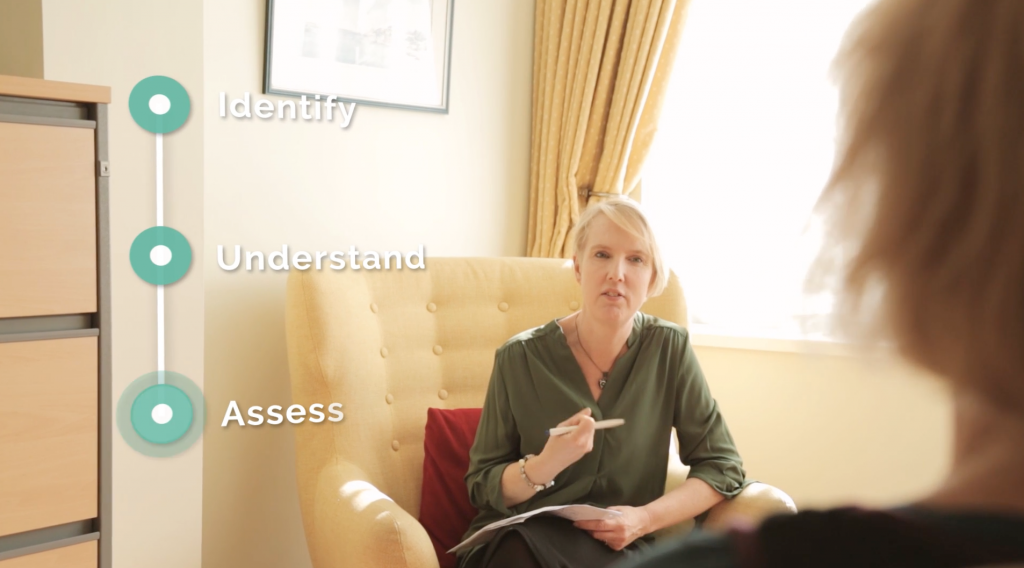
Why is storyboarding important?
Storyboarding is part of the pre-production phase of a video production, which we would argue is the most important stage of any video project, sitting in the middle of a production workshop and a production schedule.
If you are building a house, you wouldn’t expect a team of builders to turn up and say, “well, where do you reckon we should start?” To begin building without any plans or blueprints to know what size the house is, how many rooms there and what they will be used for is completely preposterous idea. It then stands to reason that if a production crew turn up at your office and say, “okay, what do you want us to shoot?” you would find that equally as ridiculous. In our process video we use the analogy that if you’re cooking a really special meal, you wouldn’t just open the cupboard doors and try and make do with what you had in there; you’d go out to the shops and buy the right ingredients for the right recipe. That is exactly what a storyboard allows you to do, go out and get the right footage to make the promotional video production you want, and need to make.
By planning in advance, you are able to deliberate and come up with the right messaging free from the pressures of having a film crew standing there waiting to hit record.
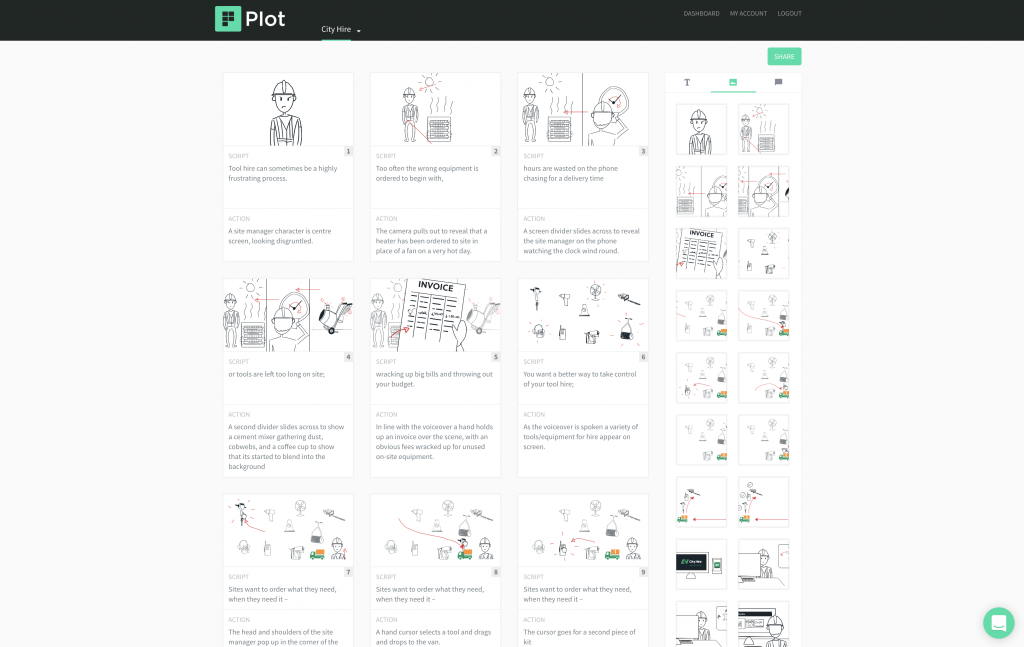
How do you create a storyboard?
Different agencies work in different ways, but we create a script or dialogue brief before storyboarding (a script for animated videos, if a voiceover is being used and a dialogue brief for filmed narration). We think that the message for your promotional video production are the most important elements and therefore should come first, that way you can deliver the narrative you want free from any visual bias. Once you’ve done this you can then look at the script and establish which visuals can support the words best through a creative process – because that is what the visuals should do, support the messaging not lead it. Other agencies like to storyboard first, I guess there is no right or wrong, it just seems to be more sensible to us that you would establish your business message first.
There are many occasions where a corporate video or promo video will involve some talking heads, which is where people deliver soundbites to the camera. To make this more engaging you can add some on screen graphics or text and it is in the storyboarding phases you would identify these motion graphics, ensuring you capture the right content during filming to fit the agreed storyboard.
Ultimately you would expect the video production company to produce the storyboard for you, using their expertise and creative knowledge, rather than trying to put it together yourself. That said it is a collaborative process and any ideas, suggestions or guidance from clients is always very welcome.
If you have a promotional video production in mind, whether an animated explainer video, product video or corporate promo video, we can help you refine your messaging and create a compelling storyboard to visually support your key points so you get more potential customers contacting you! Give us a call and we’ll have a conversation about it over a cup of something warm.

